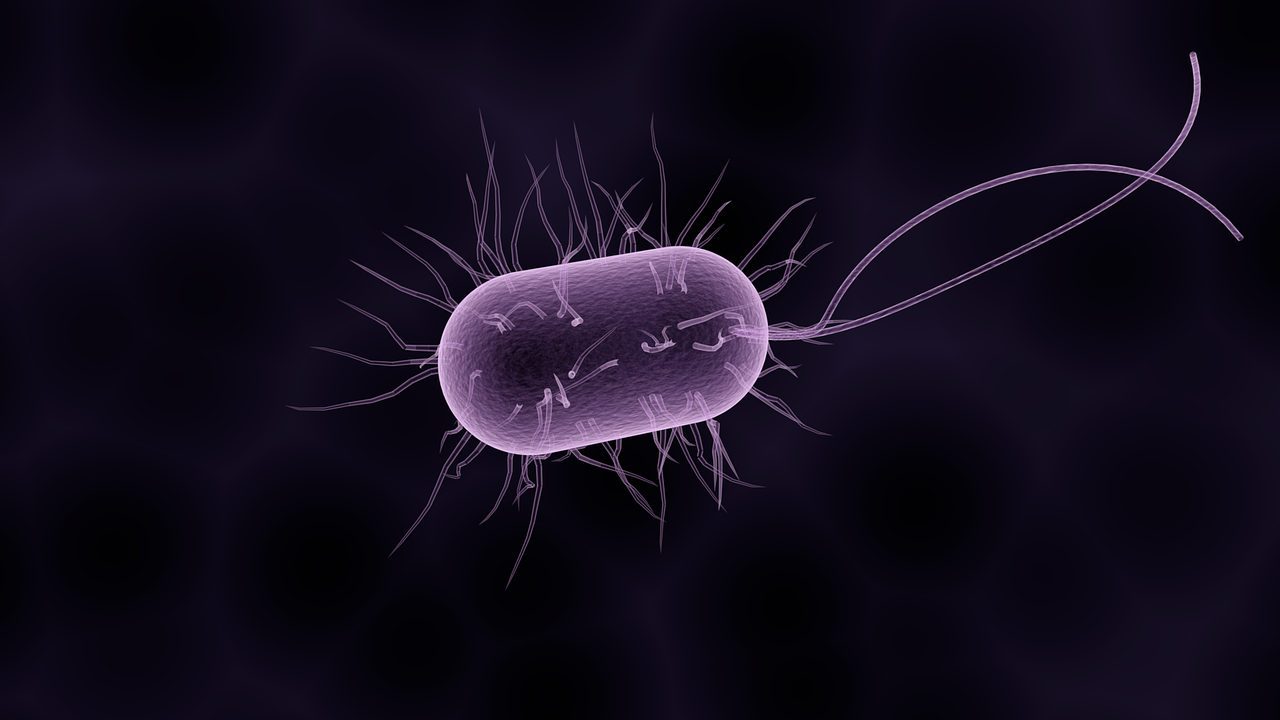
What are Biofilms?
Biofilms, sounds like something you’d watch in a movie theater, right?
Well, no one is going to pay to watch a movie featuring Biofilms, mainly because no one wants to spend money to learn about bacteria.
And that’s what Biofilms are, thin, nasty layers of bacteria that live in our bodies and impede our immune function.
It’s likely that a percentage of people who can’t fix chronic issues are dealing with Biofilms. And integrative physicians like myself have been inadvertently treating them without realizing they’re the cause of our patients' maladies.
So what is a BioFilm?
A movie about bacteria…
Ok, but really, they’re a collection of bacteria that grow together in a thin viscous membrane (think slug mucus) that surround themselves with protective layers that are often resistant to antibiotics and can also fight back against your immune system which is trying to kill them.
Now, Biofilms are recognized in modern medicine as potential issues to contend with, but most doctors only associate them with joint replacements and heart transplants because Biofilms tend to grow on foreign objects inserted into the body.
However, we’re starting to realize that Biofilms may be far more ubiquitous than we once realized and they could be a major factor in some people’s persistent health issues.
Biofilms May Be Linked to Many Chronic Conditions
At first blush, you would think that Biofilms don’t harm the body. This is because in many cases, your body actually contributes to their formation because it’s trying to contain something that could be extremely dangerous.
For instance, Biofilms can form around infections, tumors, and other injured parts of the body so that these problematic occurrences don’t spread.
But, they are bad.
Even worse is they’re not made up of a single bacteria, which tend to be easier to deal with… in fact a BioFilm can contain multiple types of bacteria or fungi and they all feed off the same nutrients and work together to help evade immune system detection, creating a cesspool of nastiness
And so, when a BioFilm forms around something like an infection, or a mass, and you attempt to knock it out with traditional means (antibiotics for example), both the infection and the BioFilm escape elimination.
You’ve probably heard of some of the bacteria and fungi in Biofilms but didn’t know they could work together to evade your immune system.
But, that’s exactly why these bacteria have such a bad reputation and can do so much damage. They include H. pylori, E. Coli, the bacterias that lead to Lyme disease, Candida, dental plaque, and more.
Part of the reason these bacteria and fungi are able to replicate and cause so much damage has to do with a protein called galectin-3 (Gal-3).
Now, I don’t want this to get technical, but it’s important to understand what Gal-3 does so you can see how we’re able to address the problems it creates.
Gal-3 is actually made by your body to help respond to illness. Its physical shape is unique and kind of acts like a sticky lattice that is meant to bind to infection sites to facilitate a normal and healthy inflammatory response.
However, when chronic inflammation is present, Gal-3 can complicate recovery and soon cause things like even more chronic inflammation, immune suppression, tumor growth, and more.
It’s now believed that many of the infections and health problems we deal with can be related to the formation and proliferation of Biofilms, which is why so many people can’t find relief from their health issues while pursuing conventional means.
In fact, the NIH believes that up to 80% of bacterial infections that are seen in a clinical setting are related to bacterial biofilm.
This is why Dr. Chris Kresser says treating illnesses associated with Biofilms using antibiotics is such a difficult proposition.
“While planktonic bacteria (single-occurrence bacteria) bacteria can become antibiotic-resistant through gene mutations, a Biofilm is often antibiotic-resistant for many reasons—physical, chemical, and genetic. For example, in patients suffering from IBD, antibiotics appear initially to work, only to be followed by a “rebound,” where the symptoms again flare up, presumably due to bacteria evading the antibiotic within a biofilm.”
The most common place for Biofilms to show up is in the nasal passages as well as the GI tract.
And it’s probably the case that the vast majority of auto-immune/ chronic issues people deal with are associated with Biofilm development in the GI tract.
There are several reasons for this.
The first is when the gut microbiome is damaged and intestinal permeability is exasperated it prevents the absorption of nutrients as well as sends toxins into the bloodstream which is a recipe for inflammation and the inability to heal.
That’s why most of the treatments used to target, disrupt and eradicate Biofilms are aimed at the gut.
And now that I’ve discussed the problem with Biofilms and how they form, it’s time to show you how we can safely and effectively knock them out for good.
How to Safely Treat Biofilms
While it may seem scary to have a trail of snot-like bacteria film living inside of you - capable of avoiding destruction from your own immune system or antibiotics the good news is we have solutions.
Let’s start with one that you’re probably already somewhat familiar with, and one that you should likely be including in your daily regimen, regardless.
1 - Probiotics:
Yup, supporting the gut microbiome through the use of probiotics (good bacteria) is one of the best means of destroying biofilm.
How, you ask?
By restoring the balance of the gut microbiome and refusing to give these bad bacteria a place to live. Remember, bacteria need something to feed on, and if they’re deprived of that they will die.
2 - Digestive Enzymes:
Part and parcel to the restoration of the gut microbiome, digestive enzymes can facilitate balancing the gut.
How?
They can actually help to inhibit the growth of Biofilms so that they can’t spread and become larger, and more difficult to break apart.
Dr. Kresser writes: “Enzymes such as nattokinase and lumbrokinase have been used extensively as coatings on implants to fight Biofilms Cohen’s protocol recommends half a 50mg capsule of nattokinase and half of a 20mg capsule of lumbrokinase for small children with chronic strep throat and autism. Other promising enzymes include proteases, plasmin, and streptokinase.”
3 - Modified Citrus Pectin
Modified Citrus Pectin (MCP) is one of the best weapons to keep Biofilms at bay This is one of the most powerful observed ways to prevent Gal-3 from becoming a breeding ground for bacteria that go on to grow into advanced Biofilms.
This formulation comes from regular citrus pectin (derived from the skin) and is modified to display bioactivity against numerous conditions.
Dr. Isaac Eliaz, MD has used it in his practice with great results, and the clinical research behind it is quite solid as well.
Eliaz says of MCP: “I use MCP extensively in my practice to address Gal-3 in cancer, cardiovascular and kidney disease, and many other conditions. This MCP is the only known agent able to bind and block the pro-inflammatory, pro-fibrotic, and cancer-promoting actions of Gal-3 and is shown through extensive research to halt and reverse the impacts of Gal-3 in critical illnesses.
Because this MCP binds and blocks Gal-3 and interrupts its Biofilm lattice formations, it’s been shown in multiple studies and clinical applications to synergistically enhance the effects of other drugs and therapies — from chemotherapy to antibiotic treatments.
It’s also a powerful detoxification and heavy metal binder often used in Biofilm protocols as a “mopping agent” to clean up the byproducts of disrupted Biofilms and microbes. Heavy metal toxicity is often linked to Biofilm formation and chronic infection, which makes MCP another key element in the success of these protocols.”
4 - Edible Mushrooms
One more surprising way to beat Biofilms is by eating certain mushrooms.
A study released by the Turkish Journal of Agriculture observed that the following mushrooms, Morchella angusticeps Peck, Ganoderma lucidum (Curtis) P. Karst., Cerioporus squamosus (Huds.) Quél., Trametes versicolor (L.) Lloyd and Lentinula edodes (Berk.) Singer were as effective at fighting multi-drug resistant Enterococcus strains.
It caused them to claim that the mushrooms' effectiveness could help to lead to the development of alternative medicines that could overcome infectious diseases and Biofilms.
A War on Bacteria
The truth is, that we need bacteria to survive.
But there are obviously points in our lives where we want to eliminate the opportunity for bad bacteria to foment dishealth in our body.
Biofilms seem to be the kind of bacteria we should be viciously seeking to eliminate, and it’s great to know that integrative techniques are more effective than conventional ones.
If you’re frequently struggling with some type of auto-immune or chronic health issue there’s a chance Biofilms could be to blame.



